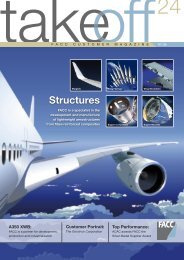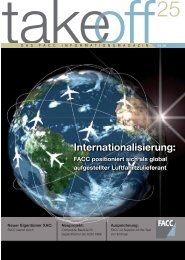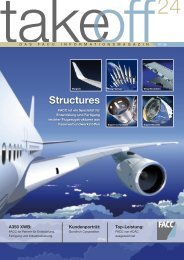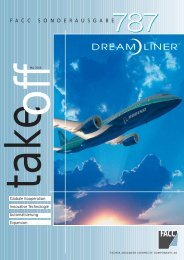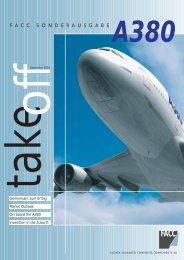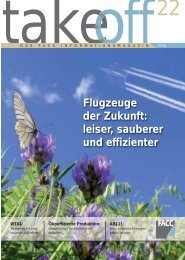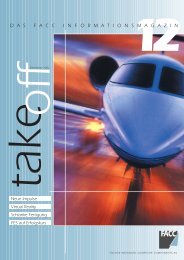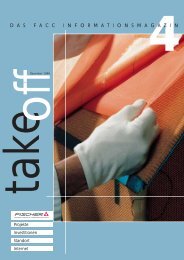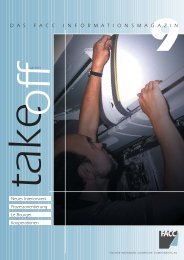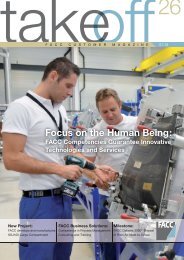You also want an ePaper? Increase the reach of your titles
YUMPU automatically turns print PDFs into web optimized ePapers that Google loves.
F A C C S P E C I A L I S S U E A 3 8 0<br />
Market Outlook<br />
<strong>Airbus</strong> predicts that passenger traffic<br />
will increase by more than 5% per year<br />
over the next 20 years, creating<br />
demand for around 1,500 very large<br />
aircraft (including 300 freighters),<br />
which are expected to make some<br />
3,400 flights per day out of 209 airports.<br />
With 70 per cent of flights expected<br />
to be clustered around 25 key<br />
airports, more than half of all very large<br />
aircraft likely to be used on flights from<br />
just ten airports, eight of which will be<br />
in Asia Pacific.<br />
However, given the need to balance<br />
the growing demand for air travel, with<br />
limited landing slots at airports, growing<br />
competition and an increasingly<br />
sensitive environment, these aircraft<br />
are likely to be used on a complete<br />
range of domestic, local, regional and<br />
intercontinental routes: one third are<br />
expected to operate on routes of less<br />
than 2,000 km (such as Hong-Kong to<br />
Beijing) while another third will be<br />
used on routes of over 9,000km (such<br />
as Paris to Los Angeles).<br />
After working closely with airlines,<br />
industrial partners and suppliers, and a<br />
whole host of experts from across the<br />
industry, <strong>Airbus</strong>’ answer was the <strong>A380</strong>:<br />
combining a wealth of innovative new<br />
technology with all that is best about<br />
the existing <strong>Airbus</strong> Family.<br />
Entering service in 2006, the <strong>A380</strong> will<br />
generate up to 15 per cent lower seat<br />
per mile costs, 13 per cent less fuel<br />
consumption and half the noise of its<br />
closest competitor, while carrying 35<br />
per cent more passengers and meeting<br />
strict local regulations, such as QC2 for<br />
departure at London airports. Two<br />
years later, the <strong>A380</strong>F will offer 30 per<br />
cent more payload, 54 per cent more<br />
volume and 2,600km/1,400nm more<br />
range than competing aircraft.<br />
In the future, further variants of the<br />
<strong>A380</strong> will be developed in response to<br />
market demand when and if it evolves.<br />
With 139 orders and commitments<br />
from 13 customers before it has made<br />
its first flight, <strong>Airbus</strong> remains confident<br />
that the <strong>A380</strong> is the solution that<br />
the industry, passengers and the<br />
environment need.<br />
takeoff4



